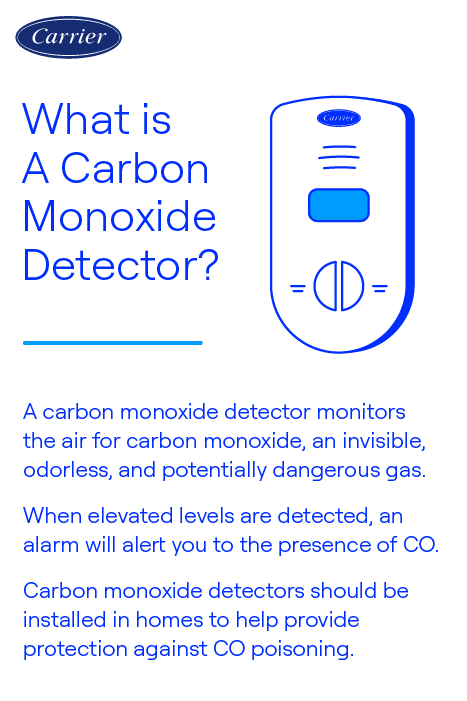What Are Carbon Monoxide Detectors, and How Do They Work?
A carbon monoxide (CO) detector is a device designed to detect the presence of carbon monoxide gas in the environment and provide an alert when dangerous levels of CO are detected. Carbon monoxide is a colorless, odorless, and tasteless gas that can be lethal if inhaled in high concentrations, making CO detectors essential for safety in homes, workplaces, and other indoor environments. Learn more about the causes of carbon monoxide.

How Does a Carbon Monoxide Detector Work?

A carbon monoxide (CO) detector is a device that senses the presence of carbon monoxide gas in the environment. Here's how it works:
Carbon Monoxide Alarm Mechanism
The detector continuously monitors the air for CO levels. If the concentration of CO exceeds a certain threshold, the detector activates an alarm (sound, light, or both) to alert occupants. Many detectors also display the CO concentration on a digital screen.
CO Detector Power Source
Several different power sources for carbon monoxide alarms exist. Carbon monoxide alarms can be battery-powered, plugged into the wall, or AC powered. CO detectors may also be combined with a smoke alarm.
CO Alarm Features

Carbon Monoxide Detector Importance
- Health Protection: Provides early warning to prevent CO poisoning, which can cause headaches, dizziness, nausea, and even death.
- Safety Assurance: Essential in homes with fuel-burning appliances, fireplaces, or attached garages to ensure the safety of occupants.
- Peace of Mind: Offers reassurance that the air in the home is being monitored for this invisible, odorless threat.
Carbon Monoxide Alarm Maintenance
- Regularly test the detector using the test button.
- Replace batteries as needed. Some carbon monoxide alarms have a 10-year battery that lasts the life of the product.
- Follow the manufacturer’s instructions for replacing the entire unit, usually every 10 years.
Steps To Test A Carbon Monoxide Detector
What Does A Carbon Monoxide Detector Look Like?
- Digital Display: Some models have a digital display showing CO levels.
- Indicator Lights: Often include green (power), yellow (fault), and red (alarm) LED lights.
- Test/Silence Button: A button to test functionality and silence false alarms.
- Battery Compartment: May have a visible battery compartment if it's battery-operated.
Choose Carrier's Carbon Monoxide Alarm
Frequently Asked Questions About CO Detectors
Evacuate the home and call 911 immediately and report that the alarm has gone off. Do not assume it is safe to reenter the home when the alarm has gone off. Learn more about what to do if a carbon monoxide detector goes off.
A carbon monoxide (CO) detector specifically detects the presence of carbon monoxide gas in the air. Carbon monoxide is a colorless, odorless, and tasteless gas that can be highly toxic and potentially fatal if inhaled in large amounts.
A carbon monoxide detector should be installed on each level of the home and near an attached garage. Learn more on where to place a carbon monoxide detector.

